Shelves are the unsung heroes of home design—silent canvases waiting to tell your story. Yet too many of us default to haphazard book piles or empty, echoey voids. As an interior designer who’s styled everything from NYC brownstone libraries to minimalist studio apartments, I’ve seen firsthand how intentional shelf styling can elevate a room from “just functional” to “WOW, is this a magazine spread?”
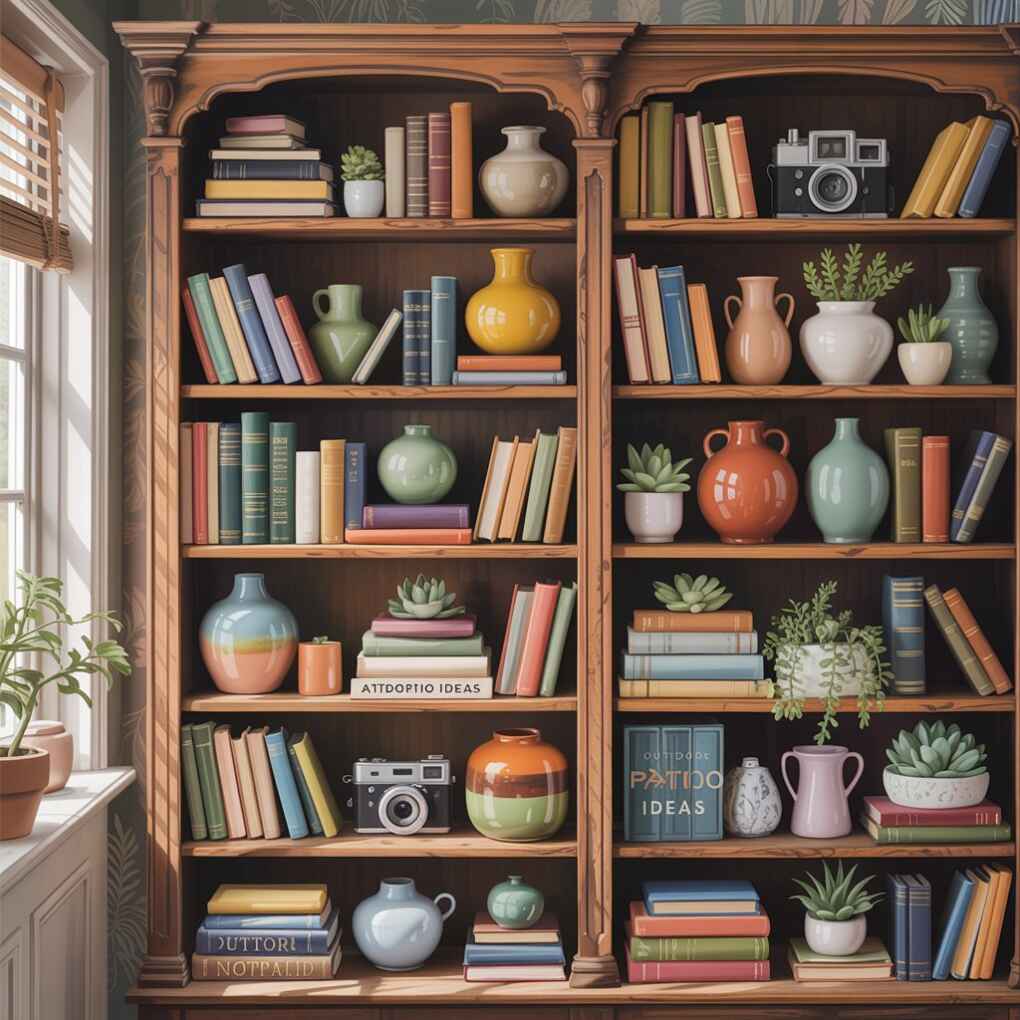
According to Living Cozy, shelves “offer the perfect space to showcase your favorite items and create beautiful arrangements” while adding “a touch of personal style.” But here’s the truth: great shelf decor isn’t about expensive accessories—it’s about strategy. Whether you’re working with a towering bookshelf in your living room or slim floating shelves in a studio apartment, these 14 ideas merge designer techniques with real-world practicality. Let’s turn your shelves into conversation starters.
1. The Color-Blocked Storytelling Shelf
Group books and objects by color to create visual rhythm without chaos. Start with a base palette (like earthy terracottas or serene blues), then layer shades from dark to light. Place a deep navy coffee table book beside a ceramic vase in matching hues, then add a light aqua linen runner beneath. This technique—used by top stylists—creates instant cohesion.
Ursula Carmona of Homemade by Carmona confirms: “Books don’t need to be hidden—they’re style assets when curated intentionally.” Avoid rainbow overload by limiting your palette to 2-3 dominant colors. Swap out thrifted finds seasonally: warm rust in fall, sky blue in summer.
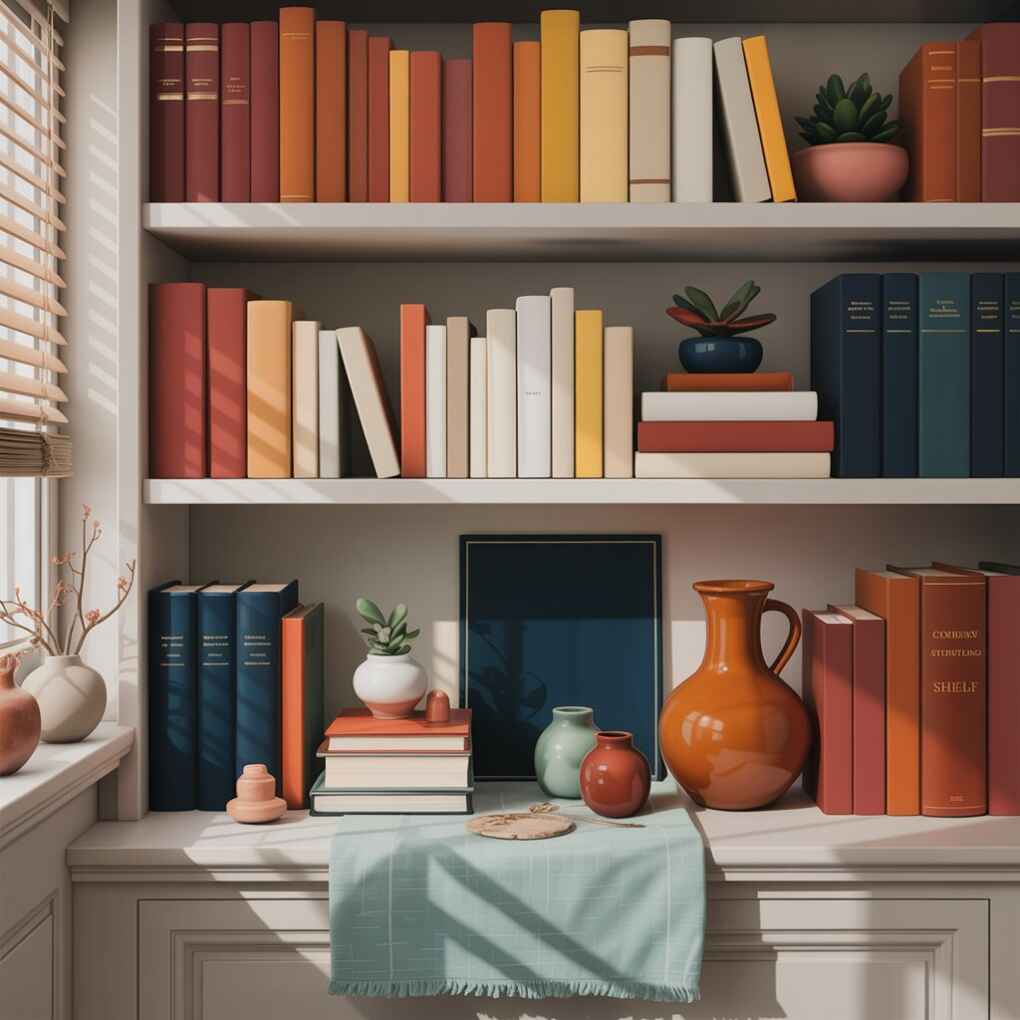
Pro Tip: Flip books backward to highlight colorful spines or uniform covers. This “shadow effect” works wonders for vintage paperbacks with faded jackets.
2. The Nature-Inspired Shelf Oasis
Bring the outdoors in with organic textures that breathe life into sterile shelves. A cluster of dried pampas grass in a terra cotta pot, a chunk of raw amethyst, and woven seagrass baskets create grounded warmth. For small spaces, a single trailing string of pearls succulent cascading from a high shelf adds movement without clutter.
According to Up To Date Interiors, “the right mix of natural elements makes shelves feel alive.” Pair glossy stones with matte wood boxes—contrast is key. Never overcrowd; leave 30% of shelf space empty to let nature “breathe.”
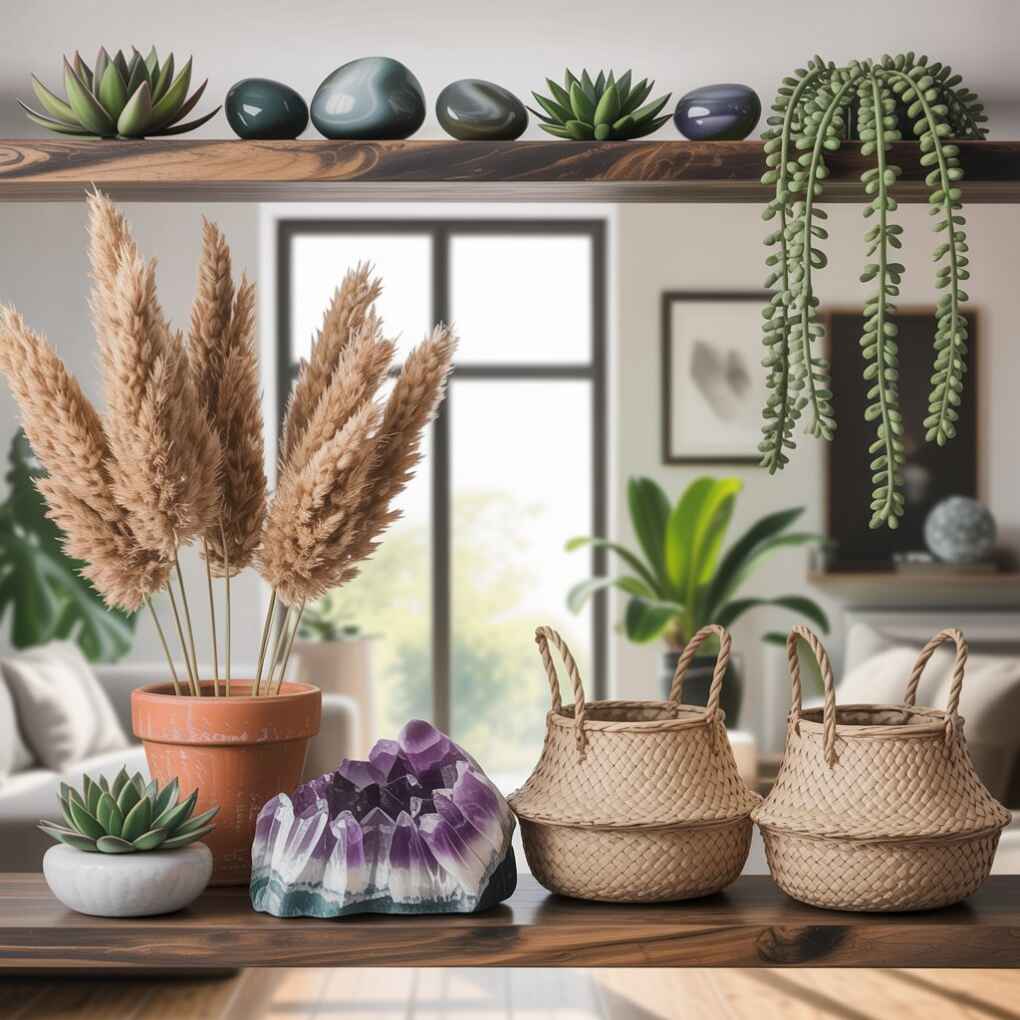
| Element | Where to Place | Visual Impact |
|---|---|---|
| Dried branches | Top shelf corner | Vertical height |
| Pebble tray | Middle shelf | Texture anchor |
| Small fern | Lower shelf | Softness |
3. The Floating Shelf Gallery Wall Hybrid
Combine floating shelves with art for dynamic dimension. Mount two narrow shelves asymmetrically between large framed prints. Style with mini-sculptures under spotlights or stack art books horizontally beneath a focal painting. This trifecta—art, objects, negative space—prevents the “museum wall” stiffness.
“Corners often go unnoticed yet hold incredible potential,” notes Fancy House Design. Try this in awkward nooks where light hits at angles.
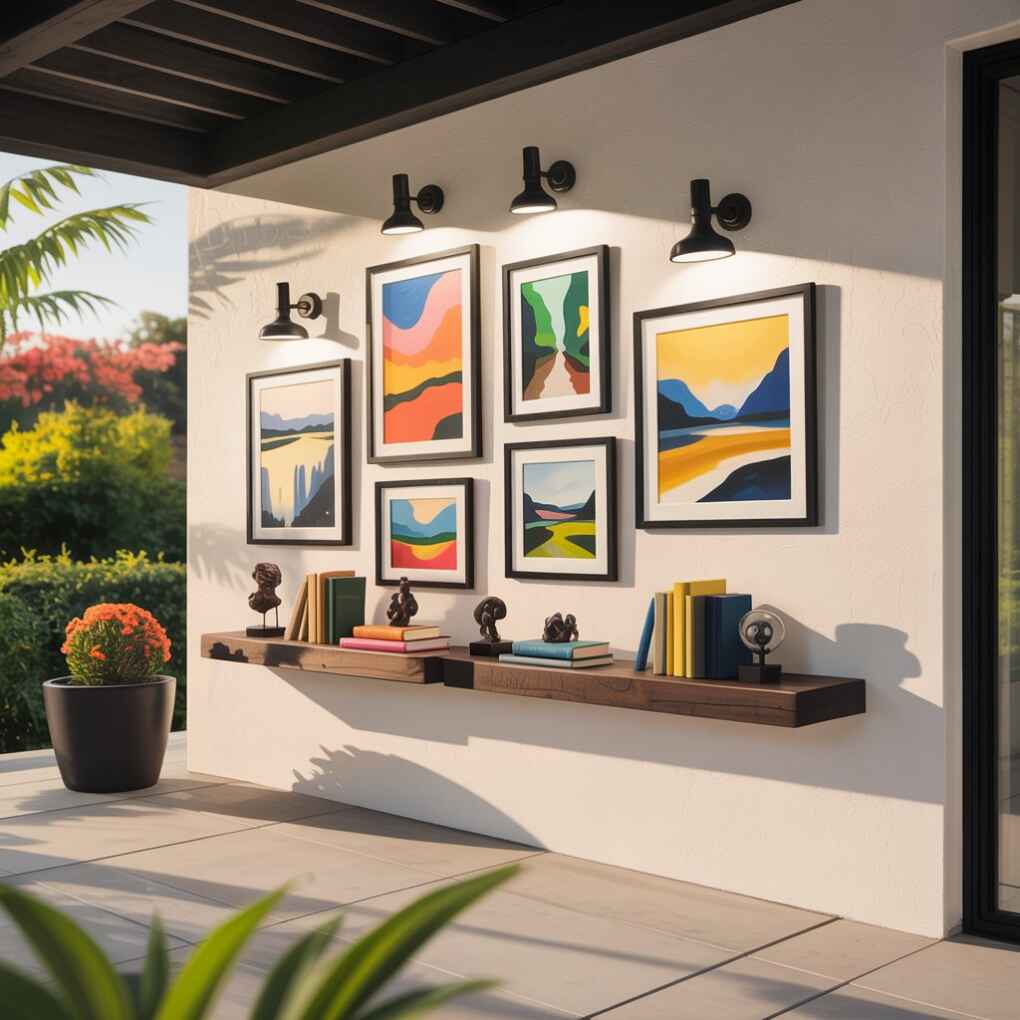
Designer’s Checklist for Balance:
- Odd-number groupings (3 vases > 2)
- Vary heights by 2-3 inches between items
- Echo frame colors in shelf objects
4. The Statement Light Shelf
Transform flat shelves into luminous displays with integrated lighting. LED strip tape behind a top shelf casts a halo glow on floating objects. For traditional bookcases, clip-on picture lights highlight favorite art books. Warm white (2700K) bulbs create intimacy; daylight bulbs (5000K) showcase details.
I once styled a client’s shelf with a vintage globe glowing from within—using a hidden fairy light nest. The result? A mesmerizing “object of wonder” that greeted guests at night.
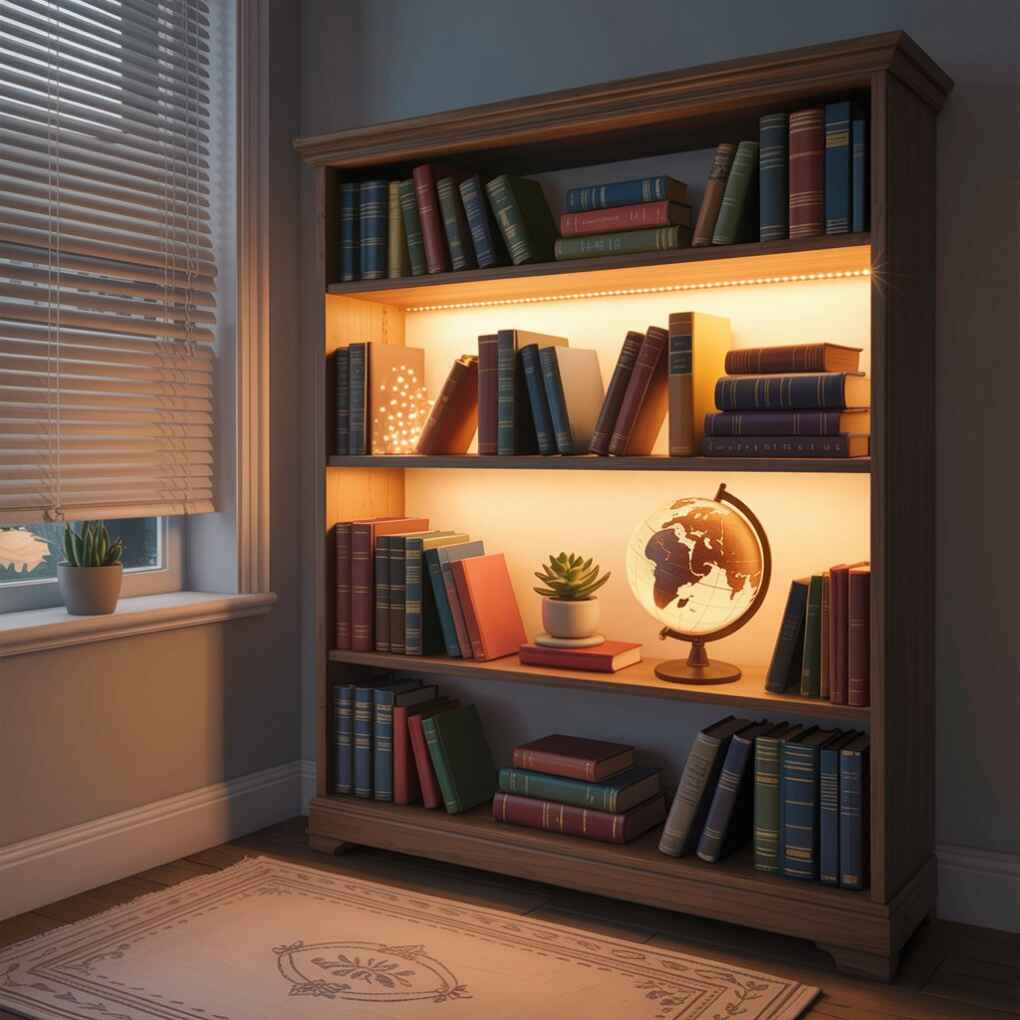
Pro Tip: Angle directional spotlights to graze textured items like woven baskets—shadow play adds depth.
5. The Curated Bookstack as Sculpture
Stop stacking books spine-out like a library! Lean 3-5 books horizontally to create shelf “terraces,” then top with small objects. Try a stack of vintage novels under a brass candlestick or art books beneath a ceramic bird. The Homemade by Carmona guide warns against uniform stacking unless you’re “going for a cozy library vibe.”
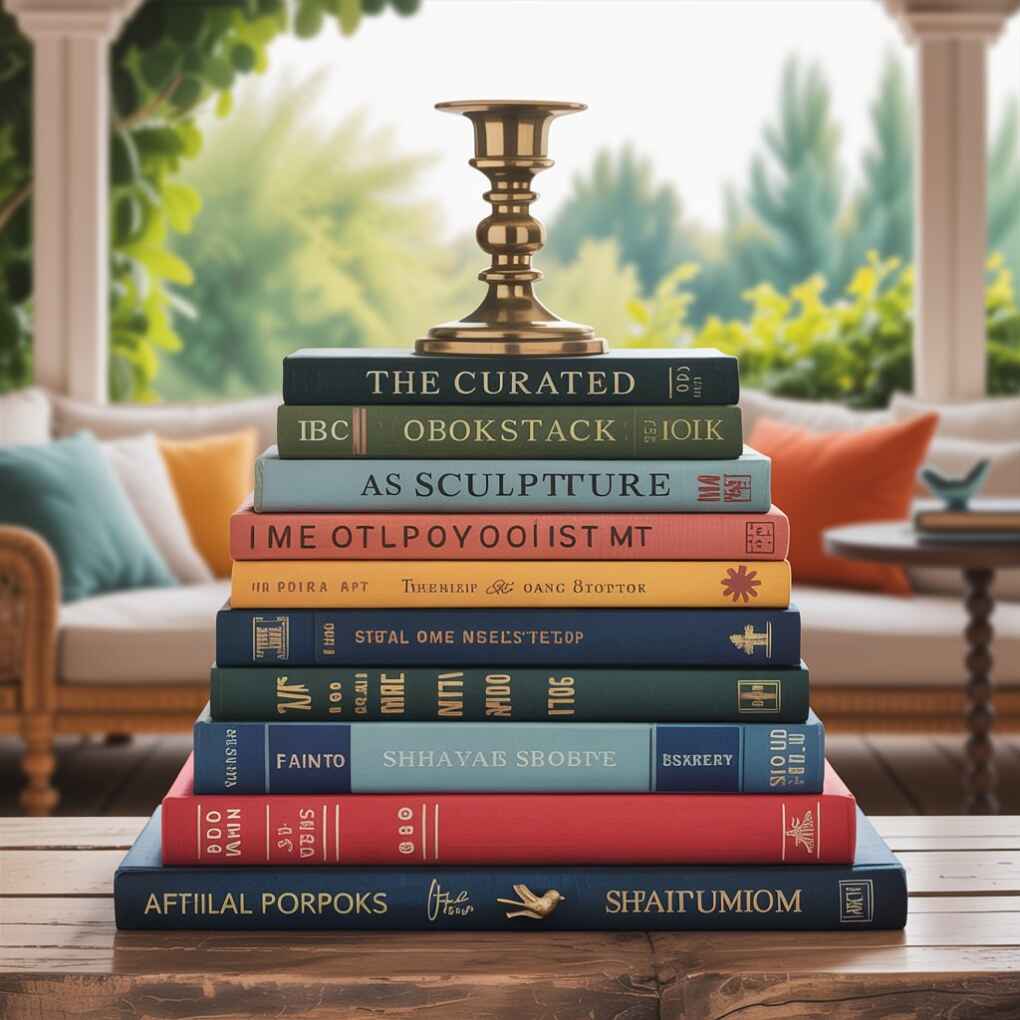
For modern minimalism, alternate horizontal and vertical stacks in clean lines. In my Brooklyn projects, clients love stacking coffee table books by size—smallest to largest—creating a built-in riser system.
6. The Themed Shelf Story
Tell a micro-story through objects. A “travel memoir” shelf might hold:
- A seashell from your Hawaii trip
- A Turkish ceramic bowl
- Postcards pinned to a cork
backboard - A worn passport beside guidebooks
This approach, recommended by Living Cozy, personalizes spaces without clutter. Rotate themes seasonally: summer adventures → winter holiday memories.
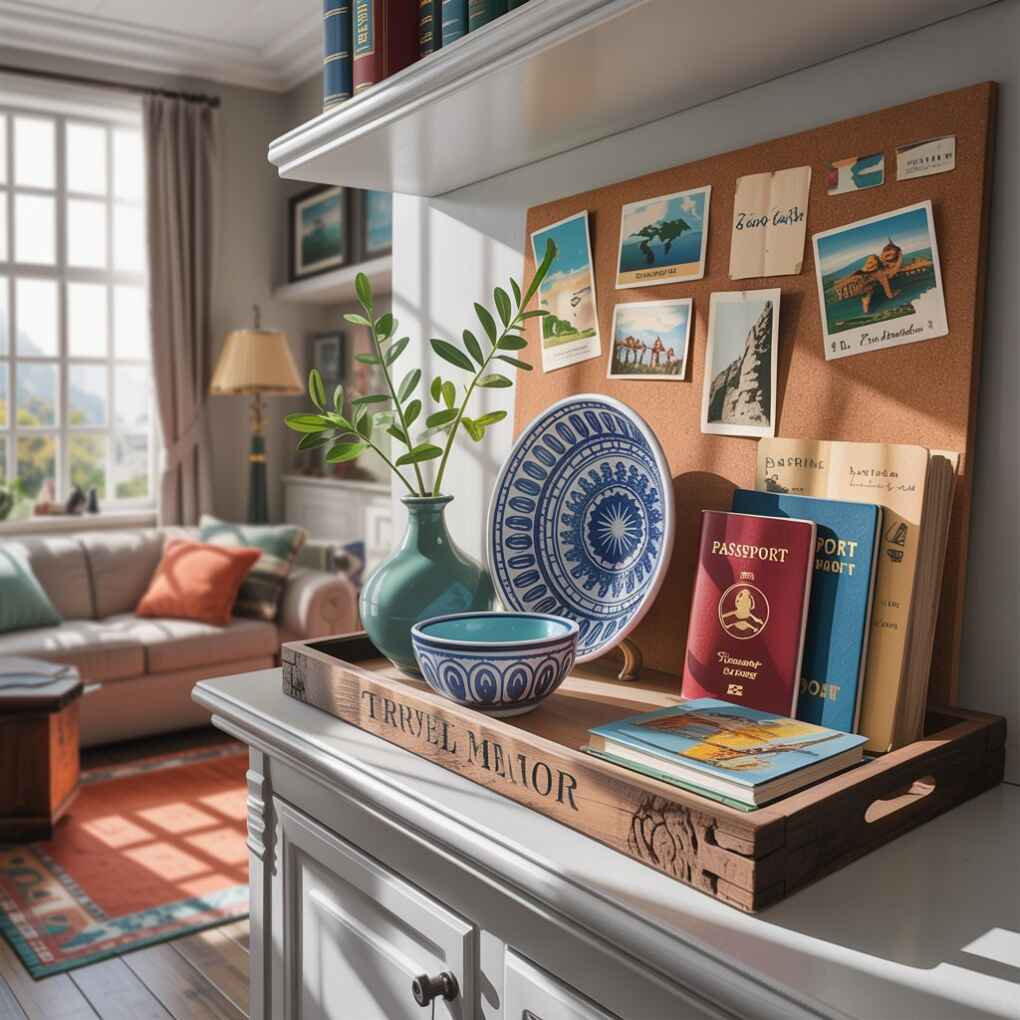
Pro Tip: Anchor stories with a cohesive base. A reclaimed wood tray unifies disparate travel souvenirs.
7. The Asymmetrical Power Move
Break free from Pinterest-perfect symmetry. Place a dramatic floor-reaching sculpture on the left, balance with a cluster of 5 small items on the right. Or offset a large plant with double stacked books elsewhere. As Shelfology states, “designer arrangements hinge on intentional imbalance.”
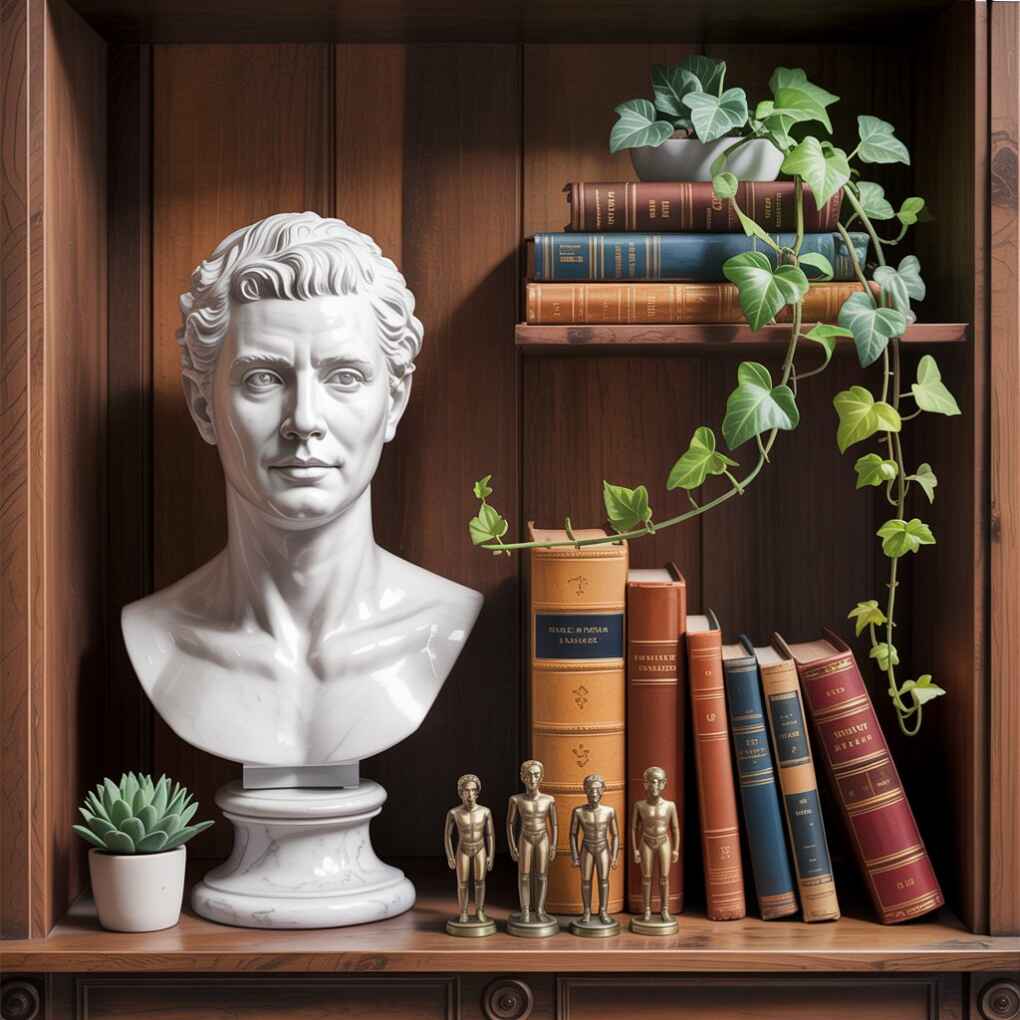
Start with a heavy anchor object (like a marble bust), then visually “counterweight” with grouped smaller pieces. Use the rule of thirds: imagine your shelf divided into 9 squares—place focal points at intersecting lines.
8. The Corner Shelf Illusion
Maximize dead corners with strategic angles. Install diagonal corner shelves to “catch” eye movement. Style with cascading elements: a trailing pothos plant at the top, a stacked wooden ladder down the side, ending with a tucked-in floor cushion below.
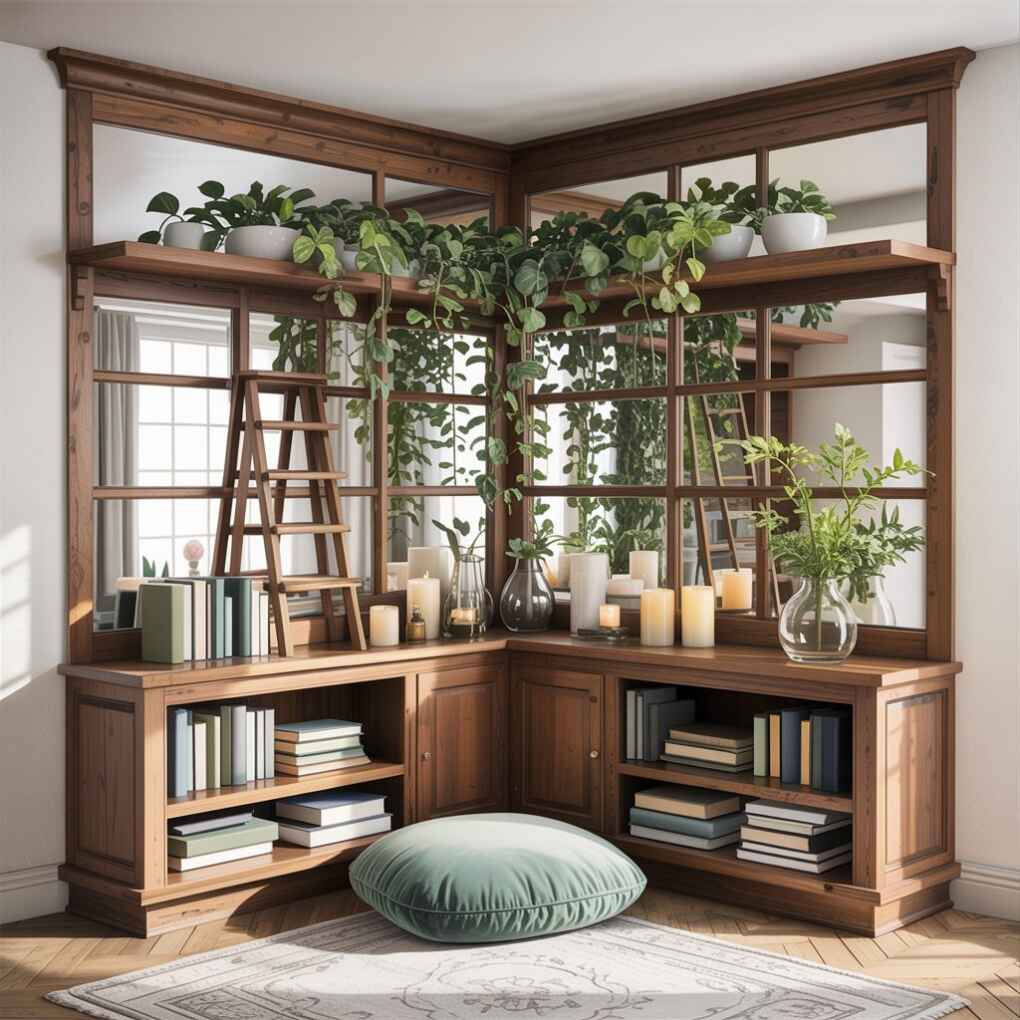
Fancy House Design calls corners “incredible potential for functionality and style.” For small rooms, add mirrored backing to reflect light and double your visual space.
9. The Layered Texture Wall
Combine materials for tactile richness. Layer a sheepskin drape over a mid-shelf, place linen boxes beneath, and top with rough-hewn pottery. Mix matte and glossy finishes: a hammered metal bowl beside a smooth ceramic vase.
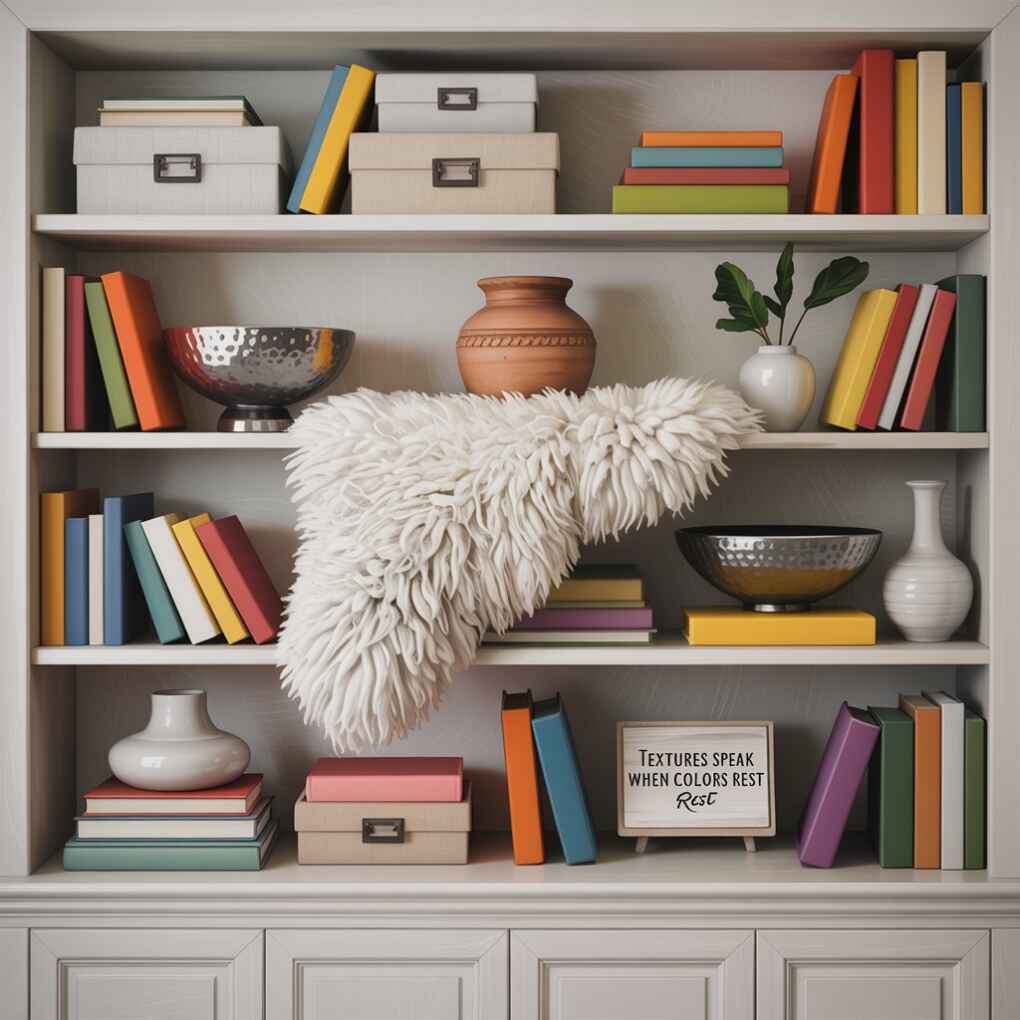
“Textures speak when colors rest,” as I tell clients. Avoid over-mixing—limit to 4 textures per shelf. Cotton, wood, metal, and stone create sophisticated contrast without noise.
10. The Negative Space Zen Zone
Fight clutter by embracing emptiness. Style only 50-60% of shelf real estate, leaving wide gaps between groupings. A single framed photo centered on a shelf, bookends holding one meaningful journal, or a solitary porcelain bowl—each becomes a moment of calm.
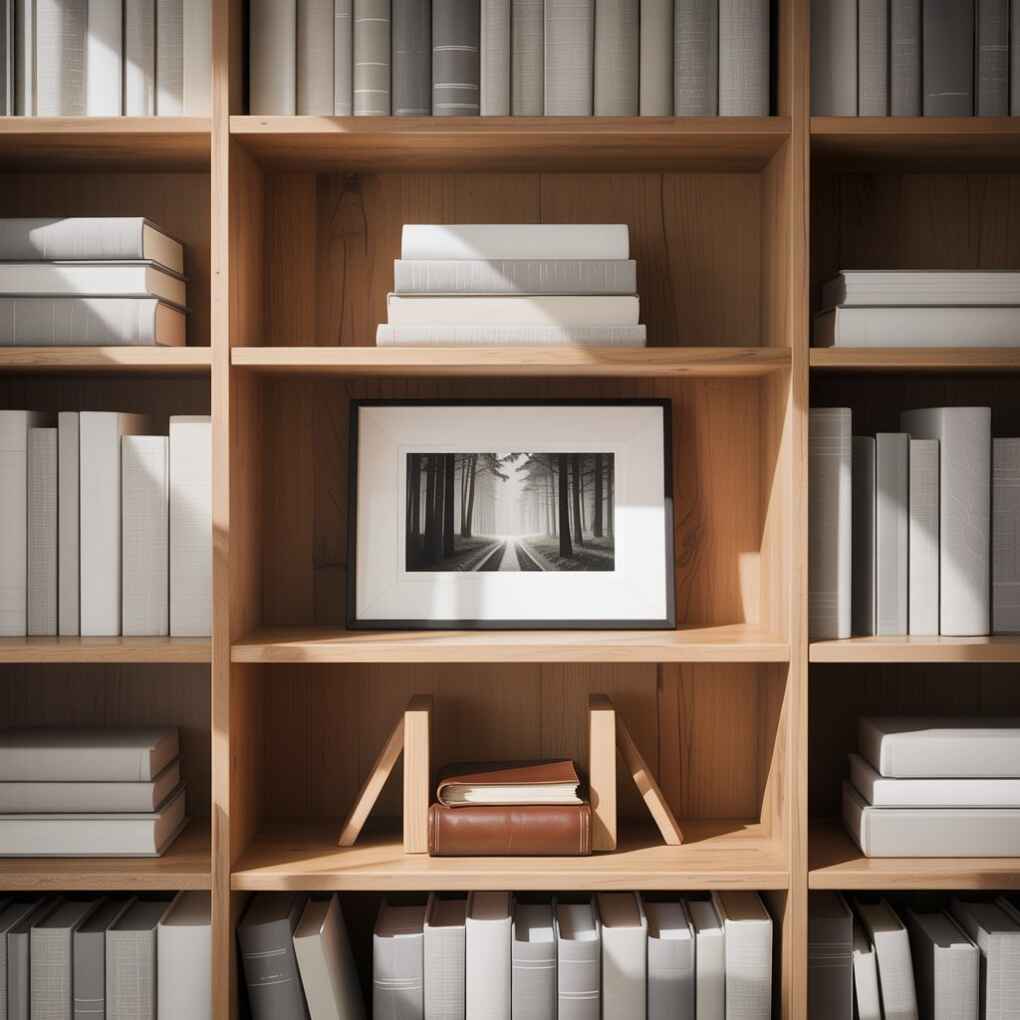
This technique, vital for modern Scandinavian decor, aligns with Up To Date Interiors advice: “Maximize home decor by showcasing fewer items intentionally.” Your eyes (and mind) will thank you.
11. The Rotating Seasonal Stage
Treat shelves like a theater set. Spring: pale blossoms and pastel teacups. Summer: woven coasters and seashells. Fall: mini pumpkins beside leather-bound journals. Winter: pinecones under fairy lights.
Pro Tip: Store seasonal items in labeled
storage basketstucked beneath shelves—out of sight, ready to deploy.
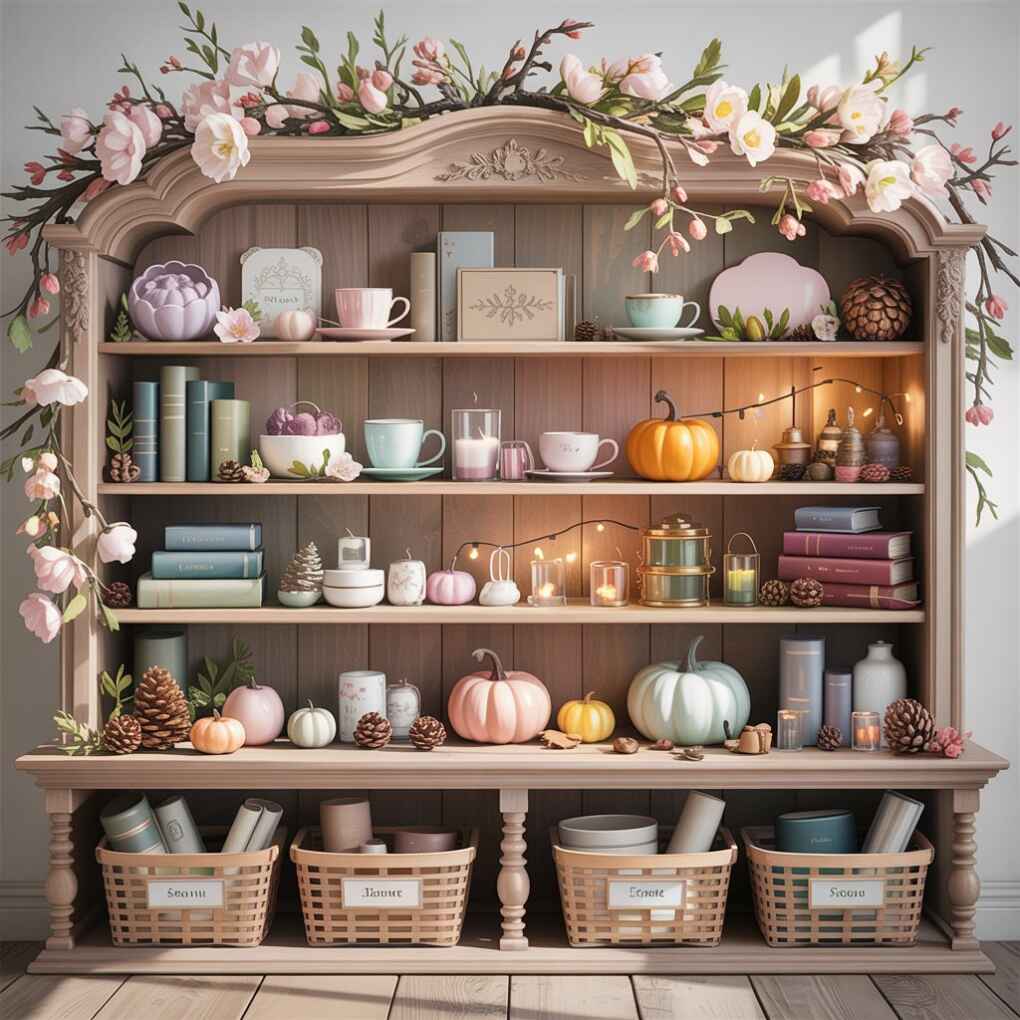
This keeps decor fresh without overhauling rooms. In NYC apartments where space is tight, I use sticky notes invisible from front to mark seasonal swap spots.
12. The Dual-Purpose Beauty
Merge function and flair. Style shelves above desks with both decor AND supplies:
- Aesthetic pen cups holding actual pens
- Magazine files displaying patterned covers outward
- Pretty boxes hiding cords
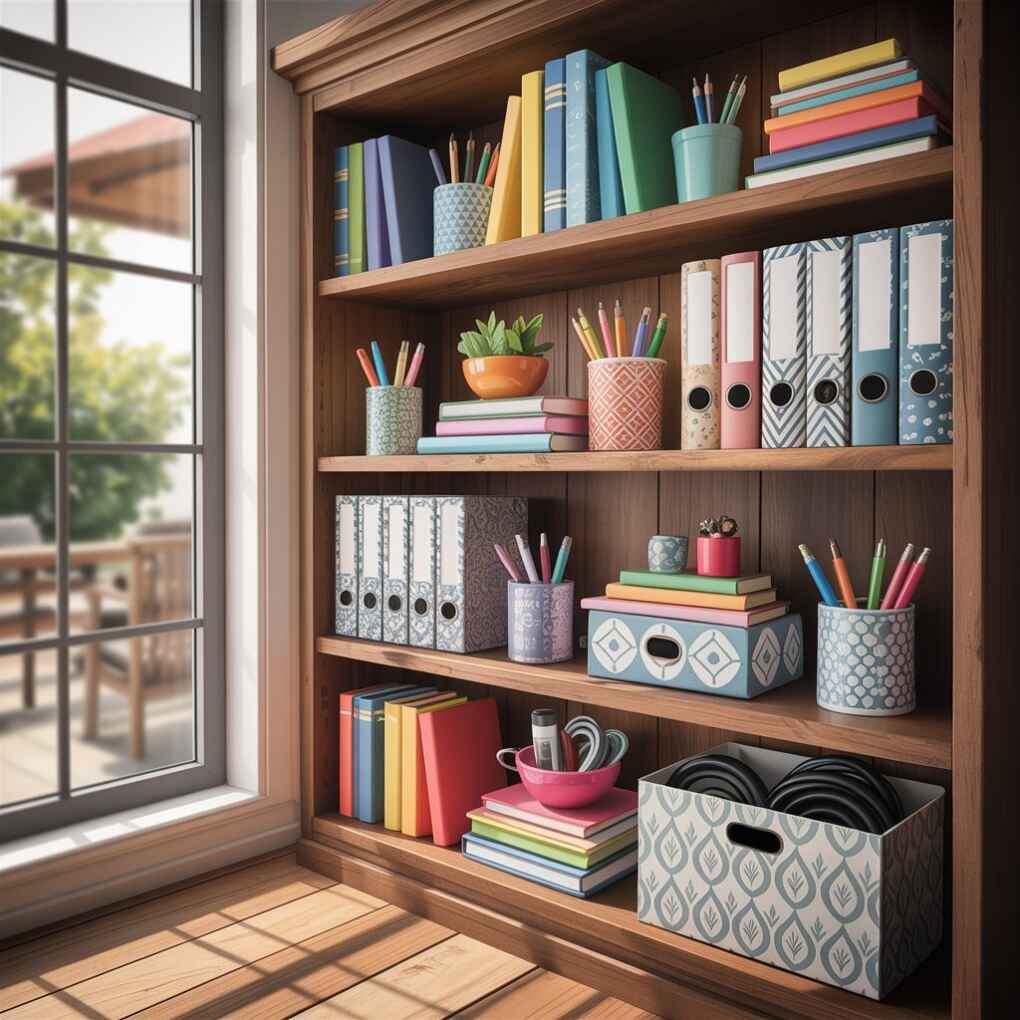
Fancy House Design champions this: “Strike a balance between showcase and storage.” In kids’ rooms, use colorful bins labeled LEGO or ART—stylish and practical.
13. The Miniature Vignette Village
Create self-contained scenes in 12-inch sections. Possible combinations:
- A “tea ceremony” spot: small teapot + cups + loose-leaf tin
- A “writer’s corner”: vintage typewriter + inkwell + quills
- A “reading nook”: tiny lamp + bookmark collection + novel
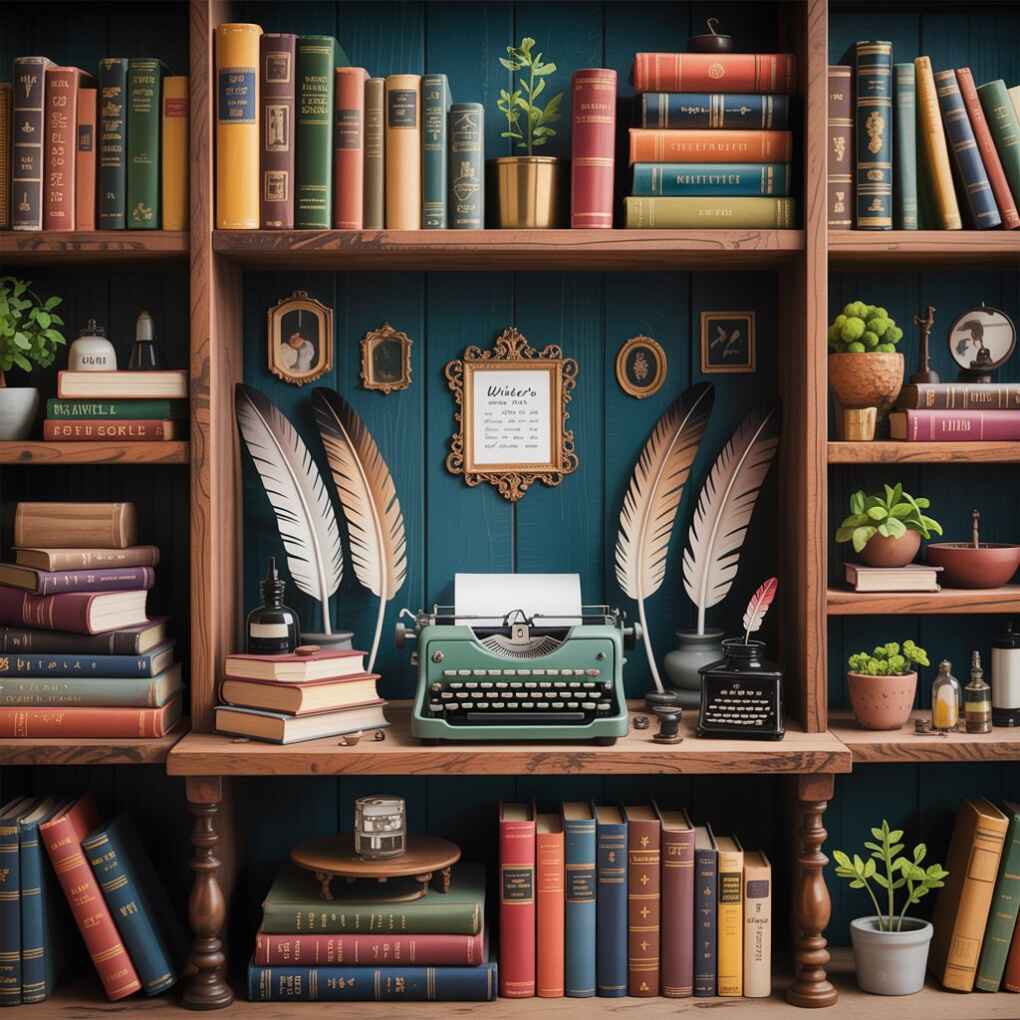
Grouping items in intentional clusters prevents “decor soup.” As Shelfology advises, “designer arrangements thrive on thematic grouping.”
14. The Personal Artifact Museum
Showcase heirlooms with museum-level care. Place Grandma’s thimble collection in a shadow box, dad’s military medals under glass, or childhood drawings in slim floating frames. Use museum putty to secure fragile items to shelves.
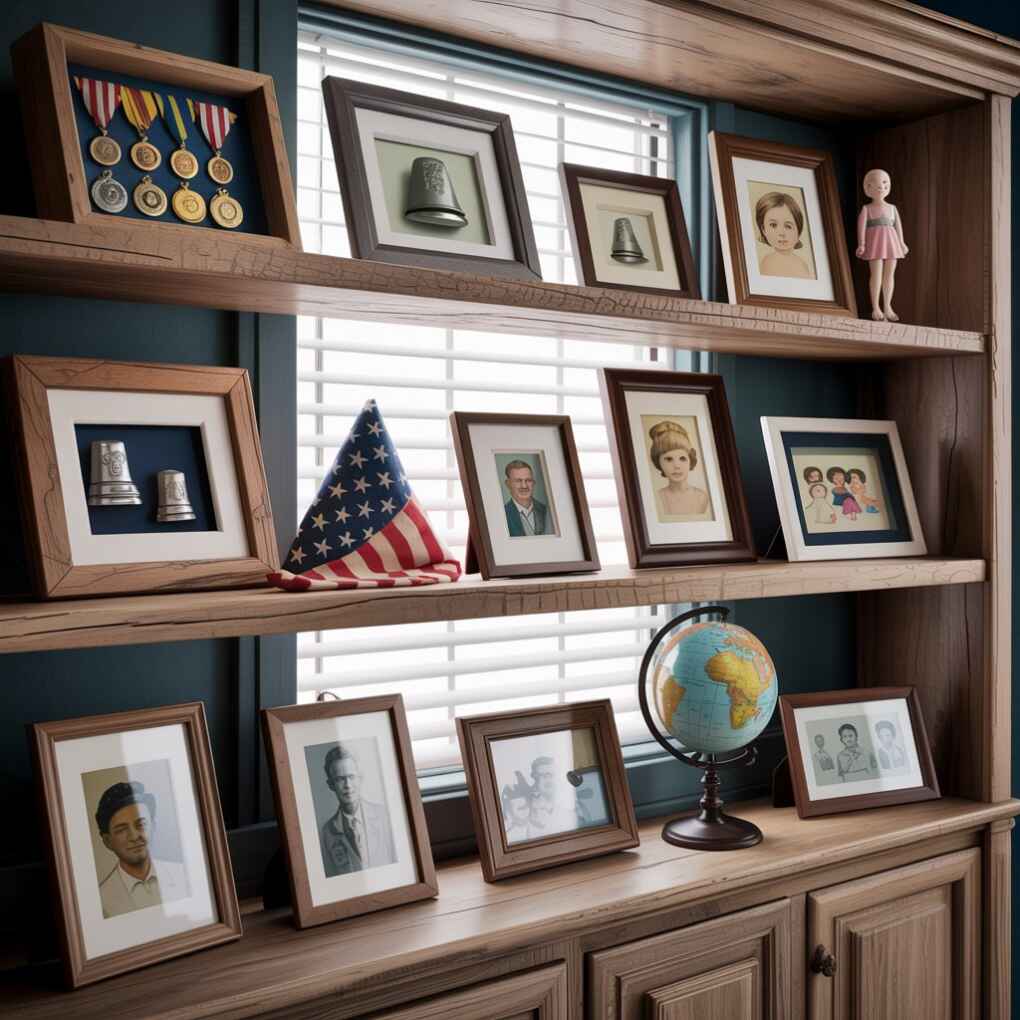
“Shelves express yourself,” reminds Homemade by Carmona. For military families, I style shadow boxes with folded flags beside photos—powerful and personal without being overwhelming.
Putting It All Together: Your Shelf Styling Manifesto
Shelf decor isn’t decorative afterthought—it’s interior storytelling. Start with one idea (like #5, the curated bookstack) and build from there. Remember Ursula Carmona’s wisdom: shelves are “a fun way to express yourself.” Your bookcase styling should feel authentic, not aspirational.
Track progress with my signature method: photograph shelves before styling, then again after. Most clients are shocked by the transformation. As Living Cozy declares, this is “a simple yet effective way to add a touch of personal style.”
Final Pro Tip: Commit to rotating 1-2 shelf elements monthly. It keeps your space feeling alive and prevents decor fatigue.
Now go style those shelves—they’re waiting for your story. And when you do? Tag #ShelfConfidence on social. I’d love to see your creations.
